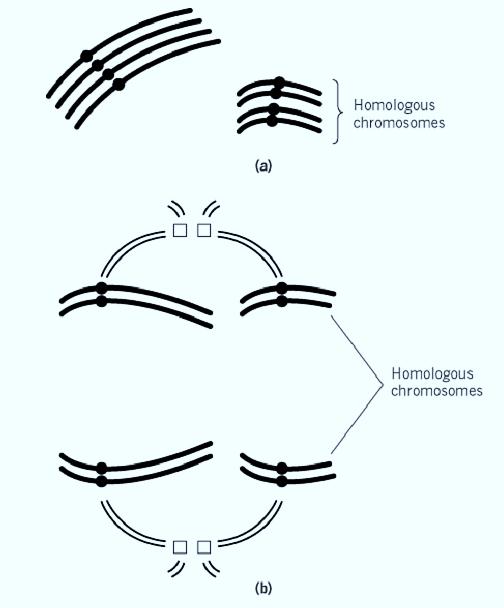

النبات

مواضيع عامة في علم النبات

الجذور - السيقان - الأوراق

النباتات الوعائية واللاوعائية

البذور (مغطاة البذور - عاريات البذور)

الطحالب

النباتات الطبية


الحيوان

مواضيع عامة في علم الحيوان

علم التشريح

التنوع الإحيائي

البايلوجيا الخلوية


الأحياء المجهرية

البكتيريا

الفطريات

الطفيليات

الفايروسات


علم الأمراض

الاورام

الامراض الوراثية

الامراض المناعية

الامراض المدارية

اضطرابات الدورة الدموية

مواضيع عامة في علم الامراض

الحشرات


التقانة الإحيائية

مواضيع عامة في التقانة الإحيائية


التقنية الحيوية المكروبية

التقنية الحيوية والميكروبات

الفعاليات الحيوية

وراثة الاحياء المجهرية

تصنيف الاحياء المجهرية

الاحياء المجهرية في الطبيعة

أيض الاجهاد

التقنية الحيوية والبيئة

التقنية الحيوية والطب

التقنية الحيوية والزراعة

التقنية الحيوية والصناعة

التقنية الحيوية والطاقة

البحار والطحالب الصغيرة

عزل البروتين

هندسة الجينات


التقنية الحياتية النانوية

مفاهيم التقنية الحيوية النانوية

التراكيب النانوية والمجاهر المستخدمة في رؤيتها

تصنيع وتخليق المواد النانوية

تطبيقات التقنية النانوية والحيوية النانوية

الرقائق والمتحسسات الحيوية

المصفوفات المجهرية وحاسوب الدنا

اللقاحات

البيئة والتلوث


علم الأجنة

اعضاء التكاثر وتشكل الاعراس

الاخصاب

التشطر

العصيبة وتشكل الجسيدات

تشكل اللواحق الجنينية

تكون المعيدة وظهور الطبقات الجنينية

مقدمة لعلم الاجنة


الأحياء الجزيئي

مواضيع عامة في الاحياء الجزيئي


علم وظائف الأعضاء


الغدد

مواضيع عامة في الغدد

الغدد الصم و هرموناتها

الجسم تحت السريري

الغدة النخامية

الغدة الكظرية

الغدة التناسلية

الغدة الدرقية والجار الدرقية

الغدة البنكرياسية

الغدة الصنوبرية

مواضيع عامة في علم وظائف الاعضاء

الخلية الحيوانية

الجهاز العصبي

أعضاء الحس

الجهاز العضلي

السوائل الجسمية

الجهاز الدوري والليمف

الجهاز التنفسي

الجهاز الهضمي

الجهاز البولي


المضادات الميكروبية

مواضيع عامة في المضادات الميكروبية

مضادات البكتيريا

مضادات الفطريات

مضادات الطفيليات

مضادات الفايروسات

علم الخلية

الوراثة

الأحياء العامة

المناعة

التحليلات المرضية

الكيمياء الحيوية

مواضيع متنوعة أخرى

الانزيمات
Homologous Chromosomes
المؤلف:
L. Avivi and M. Feldman
المصدر:
Hum. Genet. 55, 281–285
الجزء والصفحة:
18-5-2016
3401
Homologous Chromosomes
Each diploid somatic nucleus contains two copies of each chromosome, known as homologues. The existence of pairs of homologous chromosomes is important for providing at least two copies of any particular gene. This provides the cell with two opportunities to generate a functional gene product. However, it also creates the problem of segregating the homologous chromosomes into the gametes. Homologous chromosomes always pair during the first meiotic cell division, when they have to be separated to help create haploid gametes (Fig. 1). In certain instances, homologous chromosomes also pair in the somatic interphase. This pairing is common in Dipteran insects and in some plants (1) . The techniques of fluorescent in situ hybridization (FISH) and confocal microscopy (see Denaturation Mapping) allow for the definition of chromosomal territories within the nucleus. Homologous chromosomes frequently occupy adjacent territories in insects and plants (2). Nevertheless, homologues do not often pair in the interphase of mammalian cells. Homologous chromosomes are occasionally found in contact with the same nuclear structures, such as the nucleolus or the nuclear membrane, but the distances between homologues are quite variable (3).

Figure 1. Homologous chromosomes during meiosis. (a) Homologous chromosomes align during the pachytene of the first meiotic division. (b) Homologous chromosomes are separated during the anaphase of the first meiotic division.
Pairing of homologous chromosomes in meiosis occurs simultaneously with the beginning of chromosome condensation early in the prophase of the first meiotic division. In Coprinus, a fungus, the interaction between homologues, known as synapsis begins on the longitudinally aligned chromosomes at points towards the ends of the chromosomes and moves towards the centromere. It is probable that there are specific sites within the chromosome that have evolved to mediate chromosomal pairing (4). How homologous sequences are positioned next to each other during this chromosomal alignment process is also unknown, but recognition of similar nucleoprotein structures is likely to be involved. However heterochromatin association does not have a major role in this process, nor do the specialized chromosomal structures found at centromeres and telomeres. The end result of chromosomal adjustment is stable physical linkage of the homologues by the synaptonemal complex (SC) (5). This is a ribbonlike structure consisting of two electron-dense lateral elements (25 nm wide) that are separated by a less dense central region (105 nm wide). The major components of the SC are synthesized during the meiotic prophase. Most of the chromatin is located outside of the SC in loops attached to the lateral elements. The SC has important functions in providing a structural framework for efficient recombination, thereby stabilizing the crossover sites where chromatin bridges form at chiasmata (sites of crossing-over between homologous DNA sequences). SCs might also introduce constraints on the formation of chiasmata so that they cannot occur too close together. Visualization of SCs under the electron microscope after special staining procedures is a useful for revealing any misalignments of chromosomes due to deletions and duplications. This is a useful adjunct to conventional analysis of chromosomal bands.
References
1. B. John (1976) Chromosoma 46, 279–286.
2. L. Avivi and M. Feldman (1989) Hum. Genet. 55, 281–285.
3. L. Manmelides (1984) Proc. Natl. Acad. Sci. USA 181, 3123–3128.
4. R. S. Hawley (1980) Genetics 94, 625–637.
5. C. B. Gillies (1984) CRC Crit. Rev. Plant Sci. 2, 81–116.
 الاكثر قراءة في مواضيع عامة في الاحياء الجزيئي
الاكثر قراءة في مواضيع عامة في الاحياء الجزيئي
 اخر الاخبار
اخر الاخبار
اخبار العتبة العباسية المقدسة

الآخبار الصحية















 قسم الشؤون الفكرية يصدر كتاباً يوثق تاريخ السدانة في العتبة العباسية المقدسة
قسم الشؤون الفكرية يصدر كتاباً يوثق تاريخ السدانة في العتبة العباسية المقدسة "المهمة".. إصدار قصصي يوثّق القصص الفائزة في مسابقة فتوى الدفاع المقدسة للقصة القصيرة
"المهمة".. إصدار قصصي يوثّق القصص الفائزة في مسابقة فتوى الدفاع المقدسة للقصة القصيرة (نوافذ).. إصدار أدبي يوثق القصص الفائزة في مسابقة الإمام العسكري (عليه السلام)
(نوافذ).. إصدار أدبي يوثق القصص الفائزة في مسابقة الإمام العسكري (عليه السلام)


















